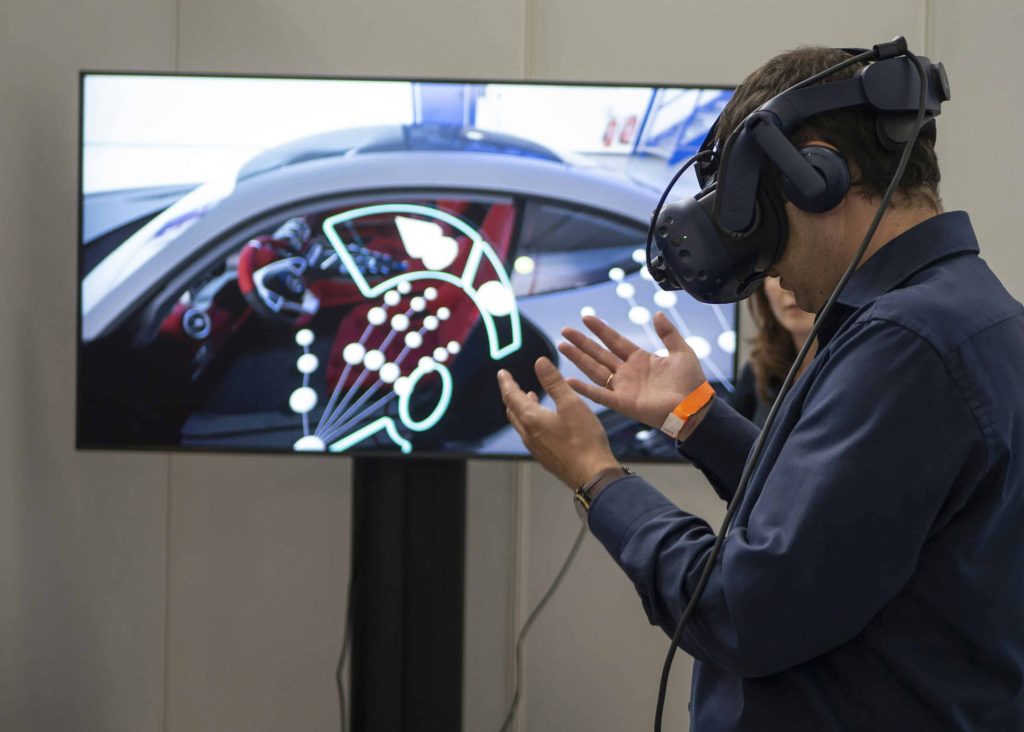
22 Jul Global Trends in Digital Art Shows in 2024
Global Trends in Digital Art Shows: Shaping the Future of Art Exhibition
In today’s fast-paced digital era, the art world is undergoing a significant transformation. Digital art, once on the fringes, has now taken center stage, propelled by technological innovation and changing consumer behaviors. One of the most prominent manifestations of this shift is the rise of digital artwork shows, which have become crucial platforms for artists, collectors, and enthusiasts alike. In this article, we delve into the global trends shaping the landscape of digital art shows and explore their implications for the future of the art world.
Digital artwork encompasses a wide array of artistic expressions created using new media technology, spanning from digital paintings and illustrations to multimedia installations and interactive experiences. Digital artwork shows, also known as virtual exhibitions or online galleries, provide a platform for artists to showcase their work to a global audience through the internet. These shows leverage various digital tools and platforms to facilitate the display, distribution, and appreciation of digital art.

Rise of Digital Art Shows
Several factors have contributed to the meteoric rise of digital art shows in recent years. Technological advancements, particularly in augmented reality (AR), virtual reality (VR), and 3D modeling, have revolutionized the creation and presentation of digital artwork. Artists now have access to powerful tools that enable them to explore new creative frontiers and push the boundaries of traditional art forms.
Moreover, the increased accessibility of the internet has democratized the art world, allowing artists from diverse backgrounds to showcase their work without the constraints of physical location or gallery representation. The COVID-19 pandemic further accelerated this trend, as lockdowns and social distancing measures forced the closure of physical exhibition spaces, prompting artists and organizers to turn to digital platforms as an alternative.

Current Trends in Digital Art Shows
Focus on Accessibility and Global Reach
One of the defining characteristics of digital artwork shows is their emphasis on accessibility and global reach. Online platforms and virtual galleries have emerged as popular venues for exhibiting new media artwork, enabling artists to reach audiences beyond geographical boundaries. This democratization of artwork viewership has fostered a more inclusive and diverse art community, transcending traditional barriers to entry.
Immersive and Interactive Experiences
Another key trend in digital art shows is the integration of immersive and interactive experiences. With the widespread adoption of AR and VR technology, artists can create immersive environments that blur the line between physical and digital art. Viewers are no longer passive observers but active participants, engaging with artworks in new and meaningful ways.
The Role of NFTs and Blockchain
The emergence of non-fungible tokens (NFTs) and blockchain technology has revolutionized the way digital art is owned, distributed, and monetized. NFTs provide a unique digital certificate of authenticity, allowing artists to establish provenance and secure ownership of their creations. Moreover, blockchain-powered marketplaces have facilitated the buying and selling of digital art, opening up new avenues for artists to monetize their work.
Evolving Curatorial Practices
Digital art shows have also led to the evolution of curatorial practices, with organizers exploring new approaches to presenting and experiencing digital artwork. Curators play a crucial role in shaping the narrative and context surrounding digital art, curating exhibitions that provide meaningful insights into contemporary issues and artistic movements. The user experience is paramount, with organizers leveraging technology to enhance the viewing experience and foster deeper engagement with the artwork.

The Future of Digital Art Shows
Looking ahead, the future of digital art shows is brimming with possibilities. As technology continues to advance, we can expect further integration of cutting-edge technologies such as artificial intelligence (AI) and extended reality (XR) into the exhibition space. The online art market is poised for continued growth, driven by the increasing digitization of the art world and the growing demand for digital artwork.
However, it is essential to address the accessibility concerns that accompany the digitalization of art. While digital art shows offer unprecedented opportunities for artists and audiences alike, they also risk exacerbating existing inequalities in access to technology and internet infrastructure. As we chart the course for the future of digital art, it is imperative to ensure that these platforms remain inclusive and accessible to all.
Conclusion
In conclusion, digital art shows represent a paradigm shift in the way art is created, exhibited, and experienced in the digital age. As they continue to gain momentum, these shows will play an increasingly significant role in shaping the future of the art world. By embracing technological innovation, fostering inclusivity, and reimagining traditional curatorial practices, digital art shows have the potential to democratize art and usher in a new era of creativity and expression. As we navigate the ever-evolving landscape of digital art, one thing is clear: the future is digital.
Key Takeaways
- Rise of Digital Art Shows: Technological advancements and increased internet accessibility have propelled digital art shows into the mainstream, especially accelerated by the COVID-19 pandemic.
- Current Trends in Digital Art Shows:
- Emphasis on Accessibility and Global Reach: Digital art shows prioritize inclusivity and transcend geographical barriers.
- Immersive and Interactive Experiences: AR and VR technologies enable immersive engagements, transforming viewers into active participants.
- NFTs and Blockchain: Revolutionizing ownership, distribution, and monetization of digital art.
- Evolving Curatorial Practices: Curators adapt to new presentation formats, leveraging technology to enhance user experience.
- The Future of Digital Art Shows:
- Integration of AI and XR technologies for enhanced experiences.
- Continued growth of the online art market, but with a need to address accessibility concerns.
- Conclusion: Digital art shows signify a shift in art creation and exhibition paradigms, with potential to democratize art and foster creativity in the digital age.
FAQs
What are digital art shows?
Digital art shows, also called virtual exhibitions or online galleries, are platforms showcasing various digital artworks globally. They encompass digital paintings, illustrations, installations, and interactive experiences, using digital tools to display, distribute, and appreciate art beyond physical spaces.
Why have digital art shows become prominent?
Technological advancements, especially in AR, VR, and 3D modeling, have transformed digital art creation and presentation. Increased internet accessibility has democratized the art world, enabling global exposure without physical constraints. The COVID-19 pandemic further accelerated this shift as digital platforms became alternatives to closed physical spaces.
What’s the future of digital art shows?
Continued growth is expected with advancements like AI and XR enhancing immersive experiences. The online art market will expand due to increasing digitization and demand. However, ensuring accessibility remains crucial for inclusivity, democratizing art in the digital era.
Learn how public art initiatives contribute to the cultural enrichment of cities and communities, enhancing quality of life and fostering a sense of belonging for residents and visitors alike.

